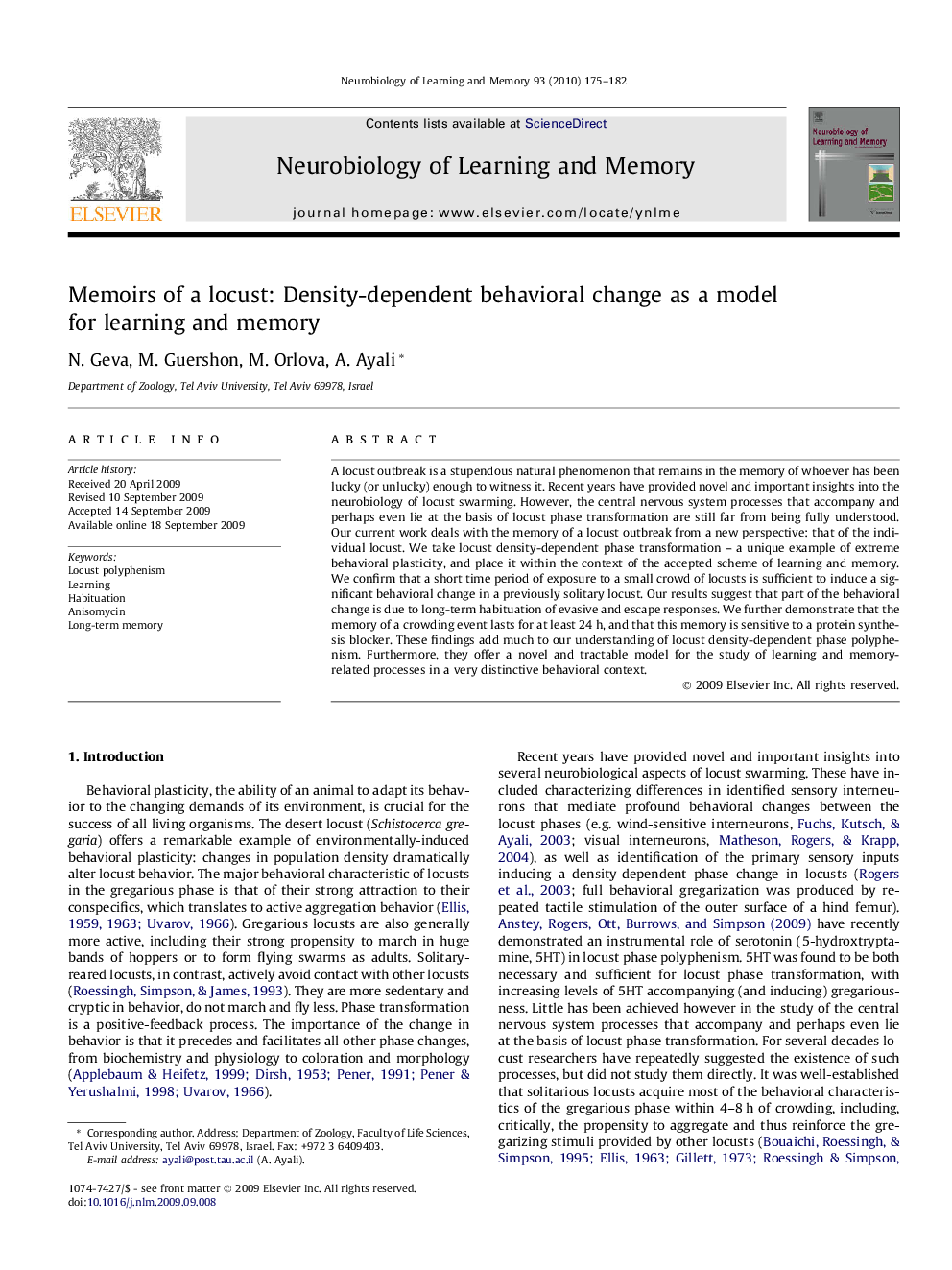| Article ID | Journal | Published Year | Pages | File Type |
|---|---|---|---|---|
| 936938 | Neurobiology of Learning and Memory | 2010 | 8 Pages |
A locust outbreak is a stupendous natural phenomenon that remains in the memory of whoever has been lucky (or unlucky) enough to witness it. Recent years have provided novel and important insights into the neurobiology of locust swarming. However, the central nervous system processes that accompany and perhaps even lie at the basis of locust phase transformation are still far from being fully understood. Our current work deals with the memory of a locust outbreak from a new perspective: that of the individual locust. We take locust density-dependent phase transformation – a unique example of extreme behavioral plasticity, and place it within the context of the accepted scheme of learning and memory. We confirm that a short time period of exposure to a small crowd of locusts is sufficient to induce a significant behavioral change in a previously solitary locust. Our results suggest that part of the behavioral change is due to long-term habituation of evasive and escape responses. We further demonstrate that the memory of a crowding event lasts for at least 24 h, and that this memory is sensitive to a protein synthesis blocker. These findings add much to our understanding of locust density-dependent phase polyphenism. Furthermore, they offer a novel and tractable model for the study of learning and memory-related processes in a very distinctive behavioral context.
